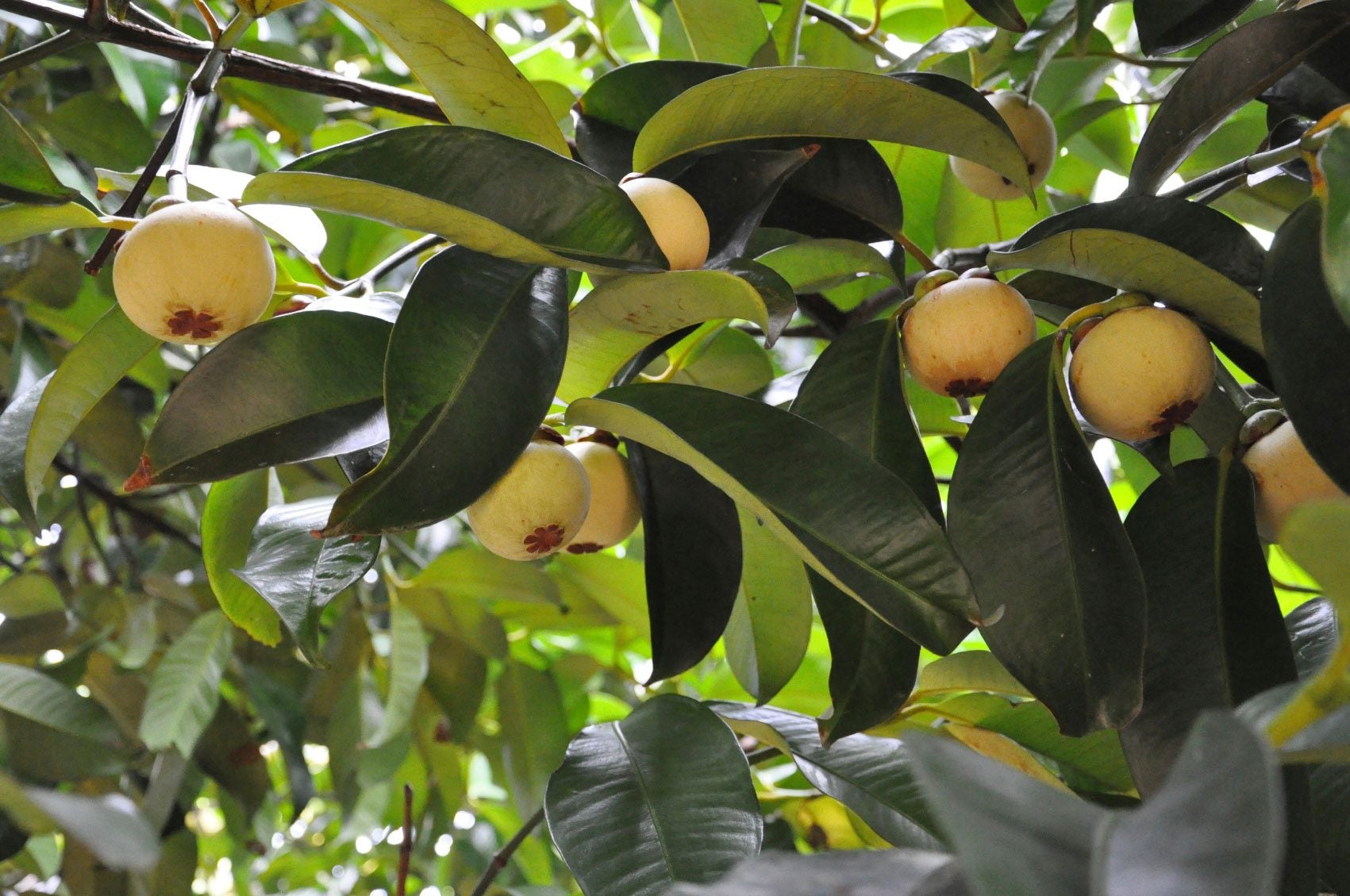
There are many truly fascinating trees and plants that many of us have never heard of since they only thrive in certain latitudes. One such tree is called the mangosteen. What is a mangosteen, and is it possible to propagate a mangosteen tree?
What is Mangosteen?
A mangosteen (Garcinia mangostana) is a truly tropical fruiting tree. It is unknown where mangosteen fruit trees originate, but some conjecture the genesis to be from the Sunda Islands and the Moluccas. Wild trees can be found in Kemaman, Malaya forests. The tree is cultivated in Thailand, Vietnam, Burma, the Philippines and southwestern India. Attempts have been made to cultivate it in the U.S. (in California, Hawaii and Florida), Honduras, Australia, tropical Africa, Jamaica, the West Indies and Puerto Rico with extremely limited results. The mangosteen tree is slow growing, upright in habitat, with a pyramid shaped crown. The tree grows to between 20-82 feet (6-25 m.) in height with nearly black, flaky outer bark and a gummy, extremely bitter latex contained inside the bark. This evergreen tree has short stalked, dark green leaves that are oblong and glossy atop and yellow-green and dull on the underside. New leaves are rosy red and oblong. Blooms are 1 ½ -2 inches (3.8-4 cm.) wide, and may be male or hermaphrodite on the same tree. Male flowers are borne in clusters of three to nine at the branch tips; fleshy, green with red spots on the outsides and yellowish red on the interior. They have many stamens, but the anthers bear no pollen. Hermaphrodite blooms are found at the tip of branchlets and are yellowish green bordered with red and are short lived. The resulting fruit is round, dark purple to reddish purple, smooth and about 1 1/3 to 3 inches (3-8 cm.) in diameter. The fruit has a notable rosette at the apex composed of four to eight triangle shaped, flat remnants of the stigma. The flesh is snow white, juicy and soft, and may or may not contain seeds. The mangosteen fruit is acclaimed for its luscious, delectable, slightly acidic flavor. In fact, the fruit of the mangosteen is often referred to as the “queen of tropical fruit.”
How to Grow Mangosteen Fruit Trees
The answer to “how to grow mangosteen fruit trees” is that you probably can't. As previously mentioned, many efforts to propagate the tree have been attempted all around the globe with little luck. This tropic loving tree is a bit finicky. It does not tolerate temps below 40 degrees F. (4 C.) or above 100 degrees F. (37 C.). Even nursery seedlings are killed off at 45 degrees F. (7 C.). Mangosteens are picky about elevation, humidity and require annual rainfall of at least 50 inches (1 m.) with no drought. Trees thrive in deep, rich organic soil but will survive in sandy loam or clay containing course material. While standing water will kill off seedlings, adult mangosteens can survive, and even thrive, in regions where their roots are covered with water most of the year. However, they must be sheltered from strong winds and salt spray. Basically, there must be the perfect storm of components when growing mangosteen fruit trees. Propagation is done through seed, although experiments with grafting have been attempted. Seeds are really not true seeds but hypocotyls tubercles, as there has been no sexual fertilization. Seeds need to be used five days from removal from fruit for propagating and will sprout within 20-22 days. The resulting seedling is difficult, if not impossible, to transplant due to a long, delicate taproot, so should be started in an area where it will stay for at least a couple of years before attempting a transplant. The tree may fruit in seven to nine years but more commonly at 10-20 years of age. Mangosteens should be spaced 35-40 feet (11-12 m.) apart and planted in 4 x 4 x 4 ½ (1-2 m.) pits that are enriched with organic matter 30 days prior to planting. The tree needs a well irrigated site; however, dry weather just before bloom time will induce a better fruit set. Trees should be planted in partial shade and fed regularly. Because of the bitter latex exuded from the bark, mangosteens suffer rarely from pests and are not often plagued by diseases.
Sign up for the Gardening Know How newsletter today and receive a free copy of our e-book "How to Grow Delicious Tomatoes".

Amy Grant has been gardening for 30 years and writing for 15. A professional chef and caterer, Amy's area of expertise is culinary gardening.
